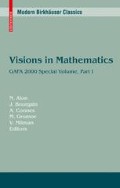Abstract
The essence of the second law is the ‘entropy principle’ which states that adiabatic processes can be quantified by an entropy function on the space of all equilibrium states, whose increase is a necessary and sufficient condition for such a process to occur. It is one of the few really fundamental physical laws (in the sense that no deviation, however tiny, is permitted) and its consequences are far reaching. Since the entropy principle is independent of models, statistical mechanical or otherwise, it ought to be derivable from a few logical principles without recourse to Carnot cycles, ideal gases and other assumptions about such things as ‘heat’, ‘hot’ and ‘cold’, ‘temperature’, ‘reversible processes’, etc., as is usually done. The well known formula of statistical mechanics, S = − σ p log p, is irrelevant for this problem. In this paper the foundations of the subject and the construction of entropy from a few simple axioms will be presented. The axioms basically are those of a preorder, except for an important additional property called ‘the comparison hypothesis’, which we analyze in detail and derive from other axioms. It can be said that this theory addresses the question: ‘When is a preorder on a set equivalent to a monotone function on the set?’ As such, it could conceivably be useful in other areas of mathematics. Finally, we consider some open problems and directions for further study.
Access this chapter
Tax calculation will be finalised at checkout
Purchases are for personal use only
Preview
Unable to display preview. Download preview PDF.
References
J.G. Boyling, An axiomatic approach to classical thermodynamics, Proc. Roy. Soc. London A329 (1972), 35–70.
H.A. Buchdahl, The Concepts of Classical Thermodynamics, Cambridge University Press, Cambridge, 1966.
C. Carathéodory, Untersuchung über die Grundlagen der Thermodynamik, Math. Annalen 67 (1909), 355–386.
J.L.B. Cooper, The foundations of thermodynamics, Jour. Math. Anal. and Appl. 17 (1967), 172–193.
J.J. Duistermaat, Energy and entropy as real morphisms for addition and order, Synthese 18 (1968), 327–393.
G. Gallavotti, Statistical Mechanics; A Short Treatise, Springer Texts and Monographs in Physics, (1999).
R. Giles, Mathematical Foundations of Thermodynamics, Pergamon, Oxford, 1964.
O.E. Lanford III, Time evolution of large classical systems, Springer Lecture Notes in Physics (J. Moser, ed.) 38 (1975), 1–111.
J.L. Lebowitz, I. Prigogine, D. Ruelle, Round table on irreversibility, in “Statistical Physics XX”, North Holland (1999), 516–527, 528–539, 540–544.
E.H. Lieb, Some problems in statistical mechanics that I would like to see solved, 1998 IUPAP Boltzmann Prize Lecture, Physica A 263 (1999), 491–499.
E.H. Lieb, J. Yngvason, The physics and mathematics of the Second Law of Thermodynamics, Physics Reports 310(1999), 1–96; Austin Math. Phys. archive 97–457; Los Alamos archive cond-mat/9708200.
E.H. Lieb, J. Yngvason, A guide to entropy and the Second Law of Thermodynamics, Notices of the Amer. Math. Soc. 45 (1998), 571–581; Austin Math. Phys. archive 98-339; Los Alamos archive cond-mat/9805005.
E.H. Lieb, J. Yngvason, A fresh look at entropy and the Second Law of Thermodynamics, Physics Today 53 (2000), 32–37; mp_arc 00-123, arXiv math-ph/0003028.
M. Planck, Über die Begrundung des zweiten Hauptsatzes der Thermodynamik, Sitzungsber. Preuss. Akad. Wiss., Phys. Math. Kl (1926), 453–463.
F.S. Roberts, R.D. Luce, Axiomatic thermodynamics and extensive measurement, Synthese 18 (1968), 311–326.
J. Uffink, Bluff your way in the second law of thermodynamics, preprint 1999.
Author information
Authors and Affiliations
Editor information
Editors and Affiliations
Rights and permissions
Copyright information
© 2010 Birkhäuser, Springer Basel AG
About this chapter
Cite this chapter
Lieb, E.H., Yngvason, J. (2010). The Mathematics of the Second Law of Thermodynamics. In: Alon, N., Bourgain, J., Connes, A., Gromov, M., Milman, V. (eds) Visions in Mathematics. Modern Birkhäuser Classics. Birkhäuser Basel. https://doi.org/10.1007/978-3-0346-0422-2_12
Download citation
DOI: https://doi.org/10.1007/978-3-0346-0422-2_12
Publisher Name: Birkhäuser Basel
Print ISBN: 978-3-0346-0421-5
Online ISBN: 978-3-0346-0422-2
eBook Packages: Mathematics and StatisticsMathematics and Statistics (R0)

